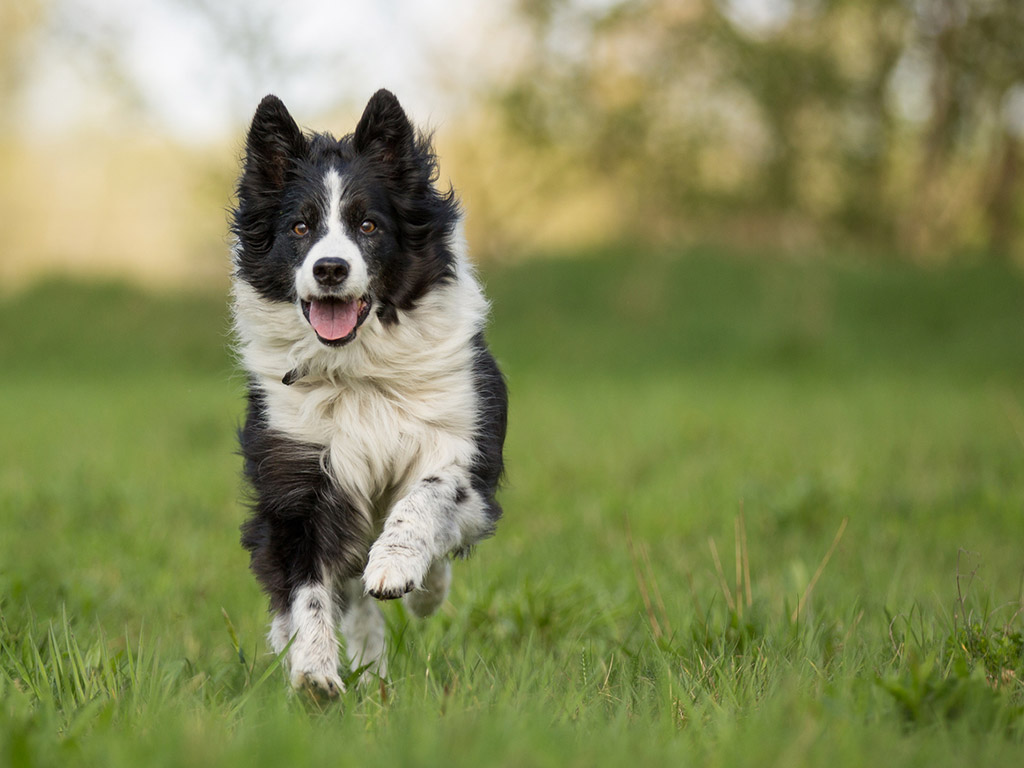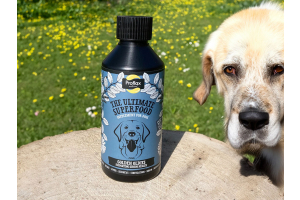
Exercising your Dog…the many benefits and how much exercise does your dog need?
One thing that all breeds of dog have in common is a love and a need for daily. From Pug to Pointer and Labrador to Lhasa Apso; they all thrive on fresh air and activity.
Dogs love to go outdoors to engage with their environment and socialise with other dogs and people. Exercise will keep your dog’s frame strong, weight in a healthy range and it will also help prevent or alleviate degenerative joint diseases such as arthritis.
There are a number of factors influencing the exercise needs of your dog. These include its breed, age and overall health….in fact, this can also vary from dog to dog.
Adult dogs of the working and sporting variety, ideally, need an absolute minimum of an hour's running per day (and for some breeds much more); twenty minutes on the lead around the block really won't cut it for a Hungarian Viszla or any other dog bred to work all day long… they will end up miserable and probably chewing your furniture, skirting boards and anything else that takes their fancy!
A well exercised dog is a happy dog spending the evening in a blissful snooze. You'll soon be able to gauge whether your dog has had enough activity by how they behave when back at home…. if they still have a lot energy and coming up to you with a ball or squeaky toy then you know that an extra half an hour chasing that ball in the park would have helped.
Of course, exercise isn't defined just by time; the type of activity has a huge influence on how it satisfies and tires your dog as mental stimulation is also important for your dog’s well-being. Running after a ball, thrown a good distance by one of those “ball throwers” is not only physically demanding, but mentally stimulating too, and you may find that a dog that's happy to walk 10 miles with you on a Sunday is ready for bed after only 45 minutes of this intense chasing about.
Some dogs love water and if you have a suitable stretch of water close by, chasing their ball into the water and swimming to retrieve it is far more demanding than the same sort of exercise on dry land. Swimming is also a great form of exercise for the whole body and a dog who loves water will be happy doing this until they tire themselves out. If the mood takes you and the temperature is appealing it is even more fun to get in the water yourself (especially at the seaside) and swim with your best friend!
Some dogs are capable of incredible feats of agility and if yours is one of those, there are lots of dog agility clubs across the country that you can join. These activities also exercise your dog's mind as well as the body.
Dogs are incredibly social creatures and if you've got friends with dogs, take them to the beach or a large open space (free of livestock) and watch them go! There's nothing more enjoyable than watching a few dogs having the time of their lives and getting great exercise too. Your dog will thank you for the time playing with their peers, and in turn become much more socially adjusted when meeting new dogs for the first time.
Finally, remember to keep the duration and frequency of exercise consistent and never exercise your dog on a full stomach as this may lead to bloat. Certain breeds (large to giant breed-dogs with deep chests) are the most commonly affected and if left untreated, can prove fatal.
PUPPIES: Even though puppies seem to have buckets of energy, they need less exercise than full-grown adult dogs.
When a dog becomes fully grown is the subject of much debate as different breeds of dogs grow physically at different rates. Smaller breeds, such as chihuahua may be fully grown at six months old, while for larger breed dogs this is much later at 18 months to two years and for some giant breeds this may be even longer.
It's easy to think that smaller dogs like sausage dogs and pugs don't really need any exercise and that chasing around the living room or back garden for half an hour will suffice. The chances are it won't, all dogs are greedy, and obesity can be a real problem for any breed, but particularly "toy" dogs that don't get much exercise. My sister’s pug regularly climbs mountains (he completed the three-peak challenge last year), and loves it too!
Initial walks for puppies should be short as over exercising a young dog can have an impact on their joints and limbs, while they are still forming and if over exercised when young, can result in problems such as early arthritis in later life.
The Kennel Club recommends for exercising puppies a ratio of five minutes exercise per month of age, until fully grown. Exercise should be introduced gradually. So, for a 3-4-month-old puppy, 15-20 minutes is a good amount of exercise for them to have. Ideally split across two walks, morning and evening if possible.
Daily walks, exploring new environments and socialising with other dogs is great for your puppy’s development. Puppy classes are also a great way for socialisation.
Above all have fun, experiment with different routes, locations, toys and activities. Just as you'll get bored of the same twenty minutes around the block each day, so will your dog….so get out in the open and play and watch that bond between you and your dog grow and grow.
When you get home after a walk and your dog curls up in their favourite place and drifts off to sleep, then you know it's a job well done!
Roger Westwood February 2018
USEFUL LINKS
The Kennel Club: https://www.thekennelclub.org.uk/getting-a-dog-or-puppy/general-advice-about-caring-for-your-new-puppy-or-dog/puppy-and-dog-walking/
The Kennel Club, Puppy Socialisation: https://www.thekennelclub.org.uk/getting-a-dog-or-puppy/general-advice-about-caring-for-your-new-puppy-or-dog/puppy-socialisation/
UK Dog Friendly Beach Guide 1: https://www.thebeachguide.co.uk/dog-friendly
UK Dog Friendly Beach Guide 2: http://www.nearestbeach.co.uk/dog-friendly/
Dog Walks: https://www.nationaltrust.org.uk/for-dog-walkers
Plan and record walks: https://www.plotaroute.com









